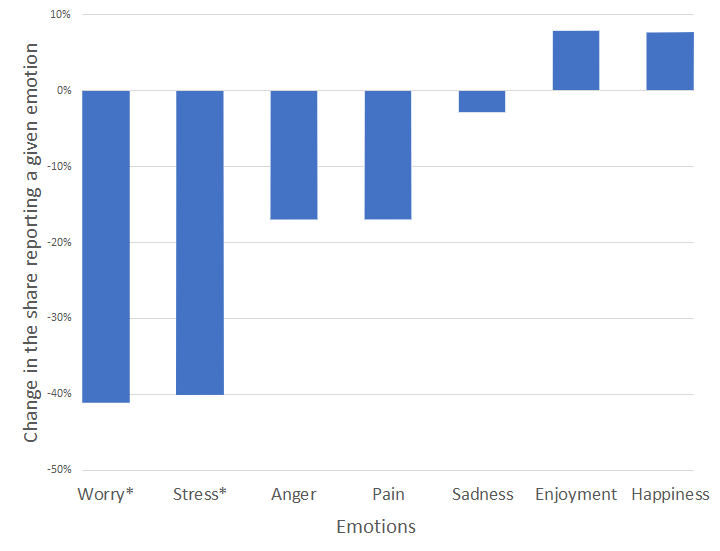
March 19, 2020
On March 17, 2020, the Trump administration announced plans to send a payment of at least $1,000 to each household in the US, with the goal alleviating the negative economic effects of the COVID-19 pandemic.
What does research have to say about the likely impact of such payments? Previous administrations have used similar economic stimulus payments—also referred to as tax rebates—to counteract falling consumer demand. These tax rebates have been extensively evaluated by researchers.
In 2008, the Bush administration implemented one-time tax rebates averaging about $1,000 per household to about 130 million low- and middle-income families. A similar but less generous program was implemented in 2001. In both cases, the rebates were disbursed using a close-to-random schedule, so it is possible to isolate their causal effects on outcomes.
What were these effects? Studies have shown that both the 2001 and 2008 rebates had a positive impact on household spending. In 2001, households spent two-thirds of their rebates in the quarter of payment and the quarter following payment, and in 2008, households spent up to 90 percent of their rebates in the quarter of payment and the following quarter. Moreover, the 2008 rebates increased personal consumption expenditures by up 2.3 percent in the quarter of payment, and by up to 1 percent in the following quarter. These are large effects.
Are similar effects to be expected now? That depends in part on whether and how households are able to spend their payments. With people practicing social distancing and shops and restaurants closed, consumers might be constrained in their ability to spend, particularly on services, resulting in a different composition of spending, and possibly a lower level, than in either 2001 or 2008.
But even if the proposed rebates were not spent as were the 2001 and 2008 rebates, research suggests they might buy people some peace of mind. My research (here, here, and here) showed that the 2008 stimulus payments had a large effect on reducing feelings of worry and stress. The figure below illustrates the magnitude of these effects. And as consumer confidence plunges, measures to boost consumers’ emotional well-being may benefit economic activity in the longer run.
Finally, it is important to ask whether a rebate that is dispersed to all households is the most effective way to spend on the order of $100 billion. Small service-oriented businesses face severe hardship due to the COVID-19 outbreak, so a stimulus targeted to provide liquidity to these businesses might be more effective. And for households facing job loss due to the pandemic, a one-time payment would be less effective than a program providing ongoing liquidity. One possibility is to activate the Disaster Unemployment Assistance program, which would expand the availability of unemployment insurance to self-employed and other workers who otherwise would be ineligible for benefits.

Figure 1: The effect of receiving payment on various emotions
SOURCE: Lachowska (2017).
NOTE: The estimates come from the last two columns of Table 5 in Lachowska (2015). * denotes that the change in the share reporting a given emotion is statistically significant at a 5 percent level.
More Upjohn Institute COVID-19 responses
- "An Unemployment Insurance COVID-19 Crisis Response" by Stephen A. Wandner and Christopher J. O'Leary
- "Preserving Jobs Despite the Coronavirus: Encouraging 'Labor Hoarding'" by Timothy J. Bartik
- "Coronavirus and the Economy: Repurposing Production, Helping the Needy, Saving Businesses, and Encouraging Job Preservation" by Timothy J. Bartik and Brad Hershbein
- "Shared-Work Programs Can Ease the Coronavirus’s Economic Impact" by Katharine Abraham and Susan N. Houseman
- "Disaster Unemployment Assistance would help gig, contract, self-employed workers affected by COVID-19" by Stephen A. Woodbury
- "Housing policy is crucial to stem the coronavirus fallout" by Lee Adams, Brian Asquith and Evan Mast.
- Stimulus steps the US should take to reduce regional economic damages from the COVID-19 recession, by Timothy J. Bartik, Brad Hershbein, Mark Muro and Bryan A. Stuart (Brookings)
